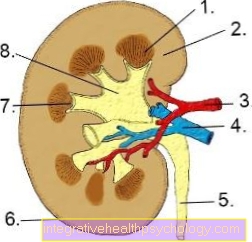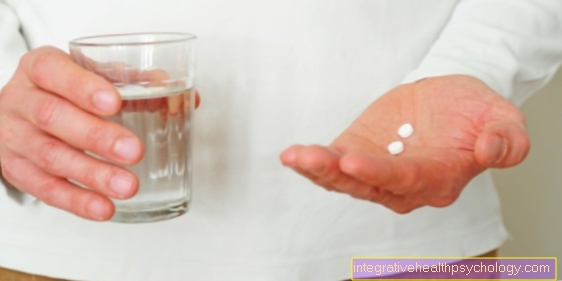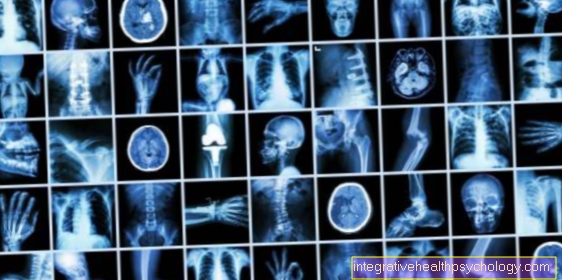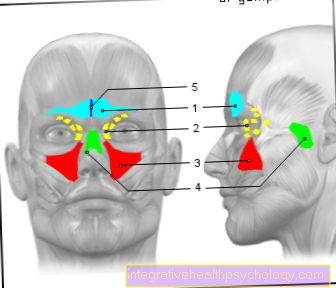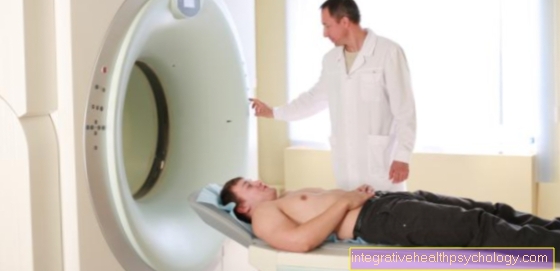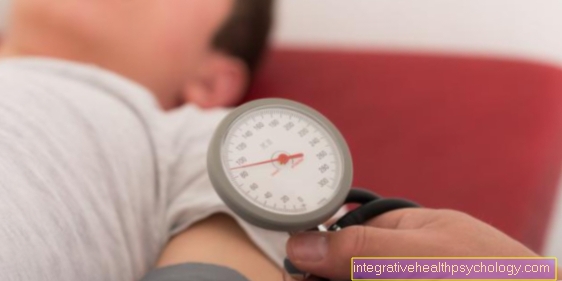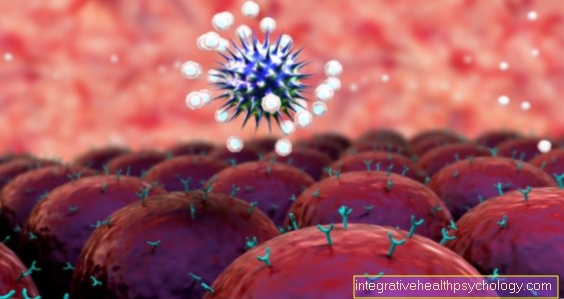Human breathing
Synonyms
Lungs, airways, oxygen exchange, pneumonia, bronchial asthma
English: breathing
Respiratory regulation

The task of human breathing is to absorb oxygen for the body's cells to generate energy and to release the stale air in the form of carbon dioxide.
For this reason, breathing (product of breathing rate / breathing speed and inhalation depth) is adapted to the oxygen demand and the amount of carbon dioxide.
Special cells in the carotid artery (Common carotid artery) and in the brain can measure the concentration of the two gases in the blood and transmit the corresponding information to the brain. There is a cell cluster there, the breathing center, that collects all available information.
In addition to the results of chemical measurements in the blood, information about the state of stretching of the lungs, signals from the respiratory muscles, but also messages from the autonomic nervous system (unconsciously, independently (autonomous) Body functions regulating nervous system) to the considered signals.
The respiratory center compares the oxygen demand and supply, so to speak, and then gives the corresponding commands to the respiratory muscles.
The breathing regulation is called semi-autonomous.
That means the
- Breathing,
- Breathing speed and
- Depth of breath
is automatically regulated by the respiratory center. So we don't have to think about how much we have to breathe.
Nevertheless, the human breathing can deliberately influence and, for example, hold one's breath. As the period of time without breathing increases, the oxygen content in the blood decreases and the carbon dioxide content increases. This stimulates breathing via the respiratory center and creates a feeling of lack of air.
You might also be interested in this topic: Diaphragmatic breathing
Human Respiratory Physiology
The Air, that surrounds us and that we breathe in every day is too scarce 80% nitrogen, 20% oxygen and vanishingly small amounts of other gases.
The air pressure depends on the sea level; twice as high on the water as at about 5000 m above sea level. From this it follows that we take in the same percentage of oxygen (namely 20% of the total amount), but due to the lower pressure we only inhale half of the air.
This air now flows into our airways. Before the blood has reached the air bubbles, it is not ready for gas exchange. The effectively lost volume is called Dead space designated. It follows that an increased Respiratory rate (shallower breathing, air reaches the Alveoli) triggers increased dead space ventilation; at the same time the effectiveness (ratio of work of breathing to oxygen uptake) of the breathing decreases.
The air in the alveoli has a different composition. Here the proportion of carbon dioxide is increased due to the continuous supply through the blood. Since the gases only have to travel a short distance due to the very thin cells, the pressures of the gases between the blood and the alveoli are equal. The blood that the alveoli (Alveoli) finally has the same gas composition as the air in the alveoli. Since oxygen is much less soluble in water than carbon dioxide, the body needs a special oxygen transporter, the red blood cells (erythrocytes). Since a certain amount of carbon dioxide remains in the alveoli, the blood leaving the lungs also contains a measurable amount. Most of the carbon dioxide is dissolved in the form of carbonic acid. Carbon dioxide has an important role in controlling the blood pH value ("blood acid").
Recommendation from the editorial team on the subject of breathing:
Do you already know our articles on the subject of breathing?
Read on here!
- breathing
- Respiratory muscles
- Diseases of the lungs
- Shortness of breath
- asthma
- The chest breathing



.jpg)


